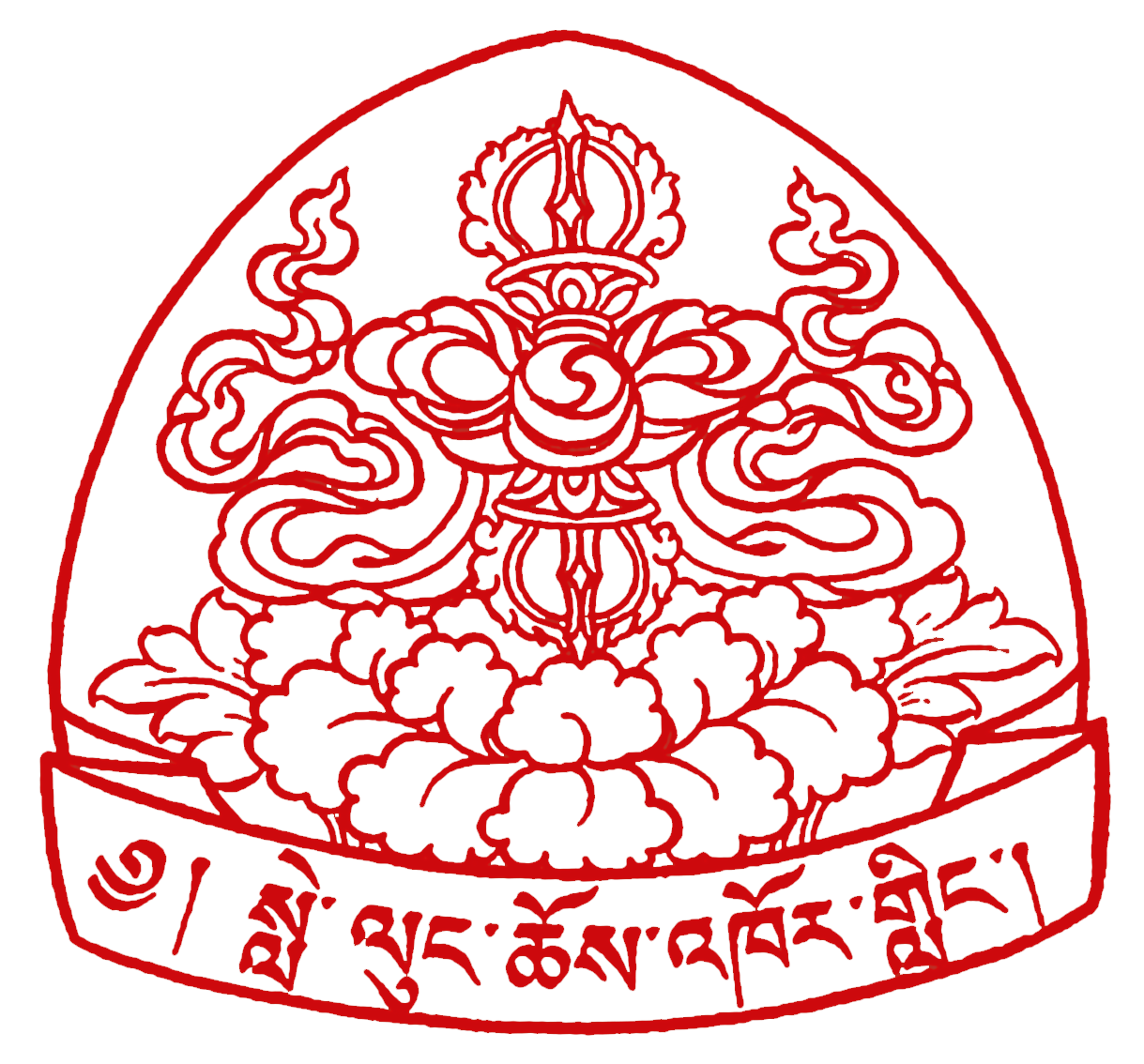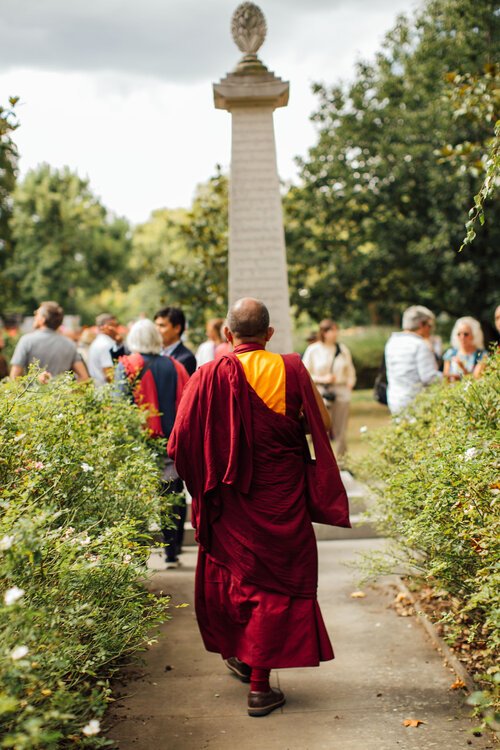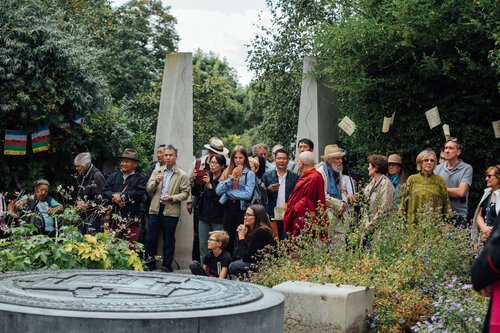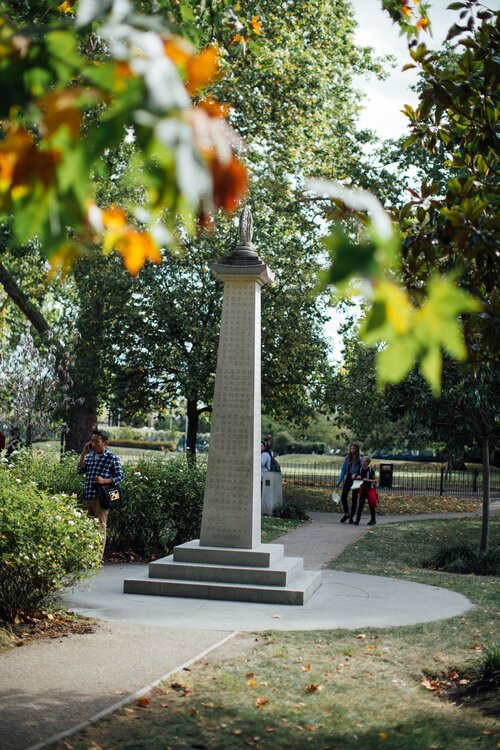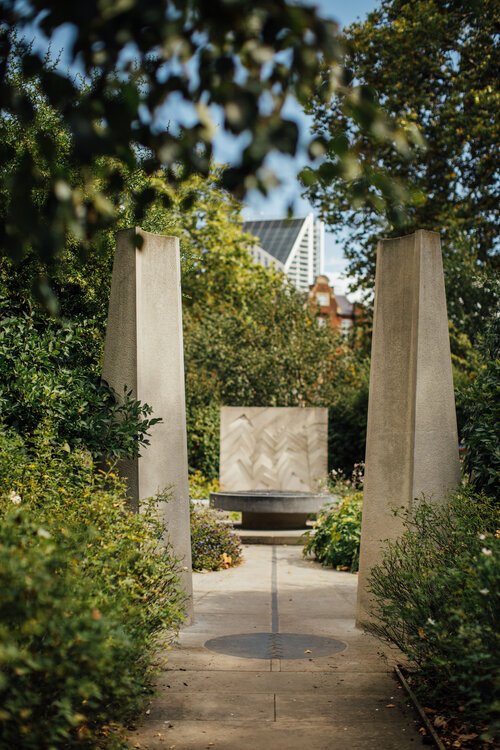Tibetan Peace Garden
Peace and harmony in the heart of london
The Lelung Dharma Trust is pleased to be involved with the Tibetan Peace Garden. We are committed towards preserving and supporting this important Tibet landmark in London through close coordination with the Southwark Council.
In May 1999, His Holiness the Dalai Lama opened and consecrated the Tibetan Peace Garden next to the Imperial War Museum, London, UK. The Peace Garden was commissioned by Tibet Foundation and built on land kindly provided by Southwark Council. It has been donated to the people of Britain for all to enjoy.
The Tibetan Peace Garden honours one of the principal teachings of His Holiness - the need to create understanding between different cultures and to establish places of peace and harmony in the world. It is hoped that it will create a deepening awareness of His Holiness’s thoughts and words.
This Garden of Contemplation (Samten Kyil) is a place where anyone can come and enjoy a time of peace and tranquillity. For the spiritually minded, this is no longer an ordinary place, because it has been both consecrated and blessed by His Holiness the Dalai Lama to have a spiritual life of its own.
Reminder, symbol, sanctuary, offering, zone of peace and inner content, or simply just a garden - it is our aspiration that you enjoy the Tibetan Peace Garden and find in it a place of inspiration and delight.
Kalachakra Mandala
The Garden serves to create a greater awareness of Buddhist culture. At its heart is the Kalachakra Mandala (2) associated with world peace. Merely to gaze on this Mandala is said to confer something of its blessing and power to transform, and here, cast for the first time in bronze, it rests as the central focus for the garden.
Near to the Garden’s entrance, is a stone pillar known as the Language Pillar (1). Carved into each side of this pillar is a special message from His Holiness the Dalai Lama (see below) in Tibetan, English, Chinese and Hindi. The pillar design is based on the Sho Pillar, a 9th-century treaty stone in Lhasa acknowledging the rights of both Tibet and China to co-exist in peace. The three carved steps at the top of the pillar represent peace, understanding and love.
The contemporary western sculptures (3, which are set on a north, south, east, west axis), representing the four elements Air, Fire, Earth and Water, and the language pillar with its carving in four languages of a message for the millennium by His Holiness the Dalai Lama, form a symbol of the harmony that can be created between different people and cultures.
Around the Mandala are 8 meditation seats which represent the noble eightfold path: right view, thought, speech, action, livelihood, effort, mindfulness and concentration.
The garden also stands as a monument to the courage of the Tibetan people and their patient commitment to the path of non-violence and peace. It will remind us too that Tibet's culture is a treasure of our common heritage, and how vital it is that it be kept alive.
The inner gardens (4) are planted with herbs and plants from Tibet and the Himalayan regions, while the pergola is covered with climbing plants, including jasmine, honeysuckle and scented roses. The surrounding area is landscaped and planted with trees in a collaborative venture that involved the Borough of Southwark and the local community.
““We human beings are passing through a crucial period in our development.
Conflicts and mistrust have plagued the past century, which has brought immeasurable human suffering and environmental destruction. It is in the interests of all of us on this planet that we make a joint effort to turn the next century into an era of peace and harmony.
May this peace garden become a monument to the courage of the Tibetan people and their commitment to peace.
May it remain as a symbol to remind us that human survival depends on living in harmony and always choosing the path of non-violence in resolving our differences.””
Location
The Tibetan Peace Garden has a unique location. The park in which it is built houses the Imperial War Museum and so attracts large numbers of visitors from all over the UK and abroad. It is within walking distance of Waterloo Station and is close to the Houses of Parliament, Lambeth Palace, the London Eye, the South Bank Centre and Tate Modern.
How to get there
The Tibetan Peace Garden
Geraldine Mary Harmsworth Park
St George's Road
London SE1 6ER
Mainline train: London Waterloo; the garden is around 10 minutes’ walk from the station
Underground: Elephant & Castle (Bakerloo/Northern Lines) / Lambeth North (Bakerloo Line)
Bus: 12,45,53,63,68,159,168, 171,176,188,344 & C10 pass outside
Parking: There are very few parking facilities nearby, and we do not advise driving to the garden. The nearest NCP is at Elephant & Castle Shopping Centre, Elephant Rd
